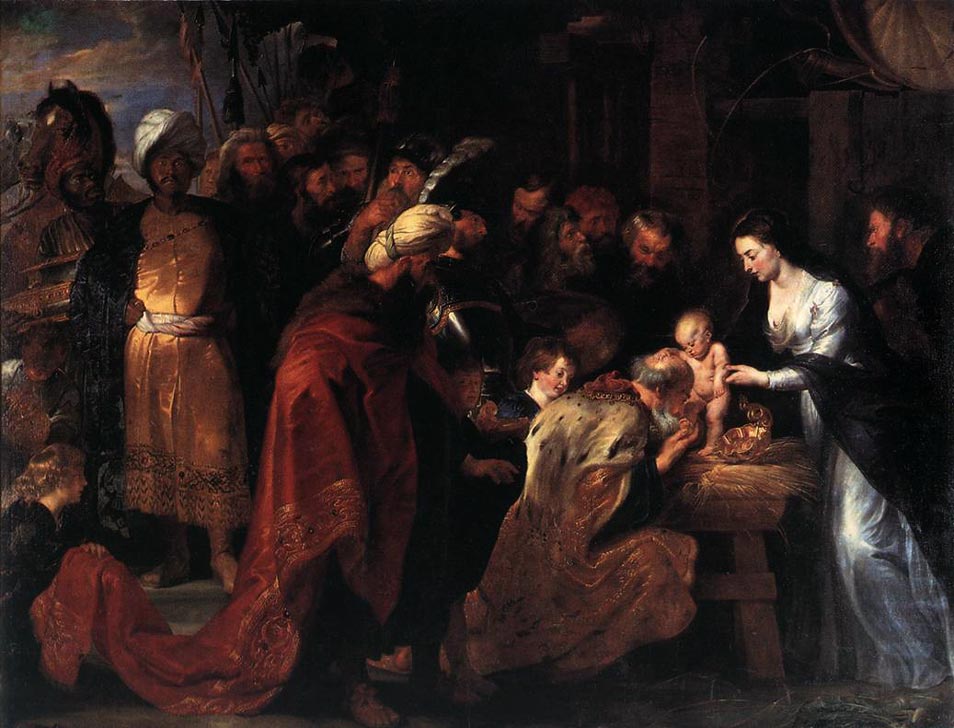| Adoration of the Magi | |
|---|---|
 |
|
| Artist | Peter Paul Rubens |
| Year | c. 1616-17 |
| Medium | Oil on canvas |
| Location | Musée des Beaux-Arts, Lyon |
| Dimensions | 99 in × 133 in |
| 251 cm × 338 cm | |
| Famous Paintings by Peter P. Rubens | |
| Samson and Delilah | |
| The Descent from the Cross | |
| Prometheus Bound | |
| The Raising of the Cross | |
| Adoration of the Magi | |
| Consequences of War | |
| Complete Works |
With Adoration of the Magi, Peter Paul Rubens takes on a subject that was popular with many Renaissance painters. Indeed, Rubens painted several versions himself, but this version astonishes with its opulence and Ruben’s masterful technique.
Chiaroscuro
In this large oil painting, the magi and their entourages have arrived at the stable where the Holy Family temporarily resides. They are dressed in magnificent robes, turbans and jewels which Rubens delights in painting, as he can use his famous chiaroscuro (light/dark) technique to pick out embroidered and jeweled hems, ermine cape, and even the blond curls of a page in bolts of sunlight in an otherwise shadowy scene.
A Touch of Strange
Rubens reserves the brightest light for the Virgin Mary and the Christ Child, who form the end of a right triangle made up of richly dressed supplicants. Even Mary, a poor Jewish girl, is dressed sumptuously and Rubens lavishes light over what looks like a gown of shimmering silver silk. This luxuriousness almost mitigates the strangeness of the Christ child, who is naked and who, held up by his mother, blesses one of the magi who has knelt to kiss his foot. This version of Adoration of the Magi now resides in the Museum of Fine Arts of Lyon.